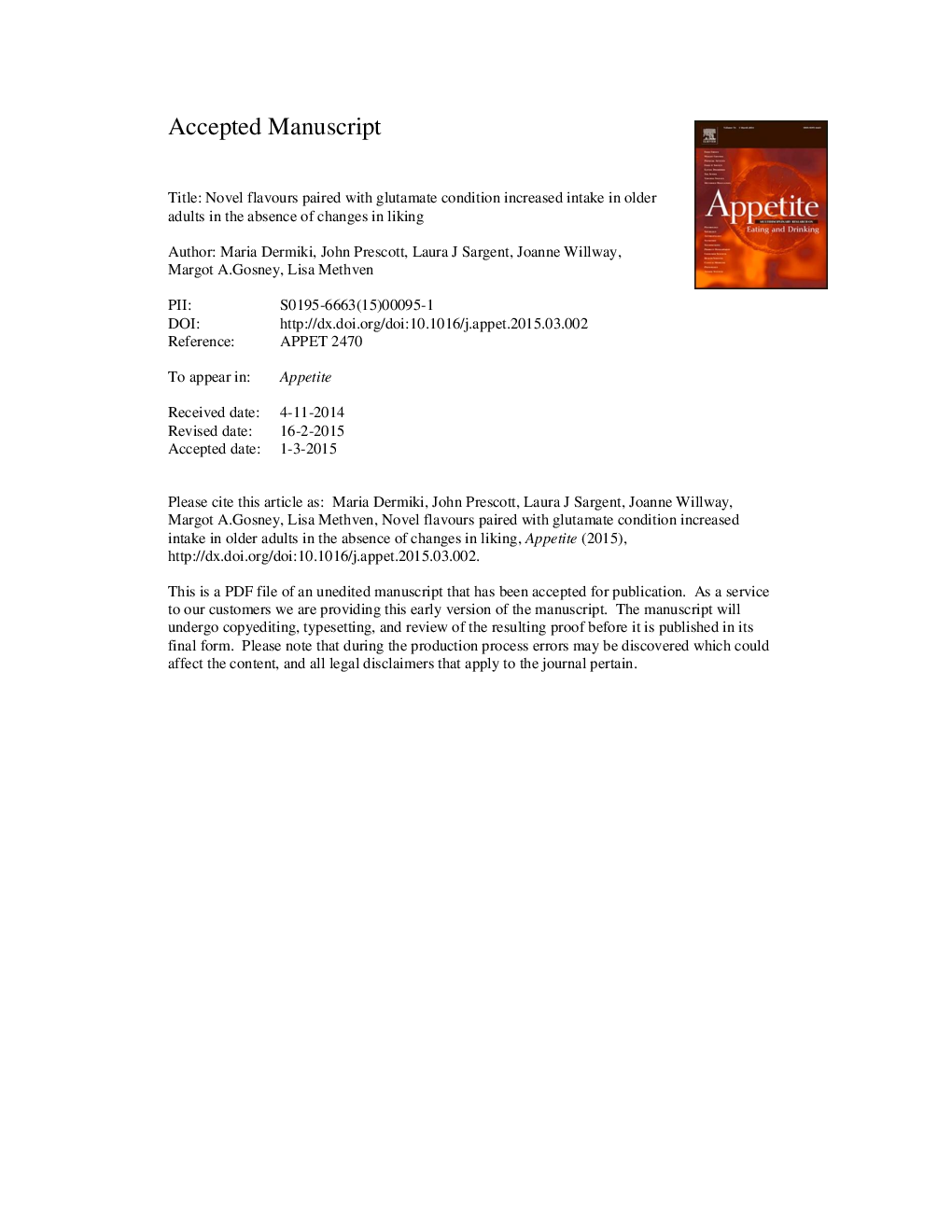| Article ID | Journal | Published Year | Pages | File Type |
|---|---|---|---|---|
| 7308817 | Appetite | 2015 | 20 Pages |
Abstract
Previous research on the repeat exposure to a novel flavour combined with monosodium glutamate (MSG) has shown an increase in liking and consumption for the particular flavour. The aim of the current work was to investigate whether this could also be observed in the case of older people, since they are most affected by undernutrition in the developed world and ways to increase consumption of food are of significant importance for this particular age group. For this study, 40 older adults (age 65-88) repeatedly consumed potato soup with two novel flavours (lemongrass and cumin) which were either with or without a high level of MSG (5% w/w). A randomized single blind within-subject design was implemented, where each participant was exposed to both soup flavours three times over 6 days, with one of the soup flavours containing MSG. After three repeat exposures, consumption increased significantly for the soups where the flavours had contained MSG during the repeated exposure (mean weight consumed increased from 123 to 164âg, pâ=â0.017), implying that glutamate conditioned for increased wanting and consumption, despite the fact that the liking for the soup had not increased.
Keywords
Related Topics
Life Sciences
Agricultural and Biological Sciences
Food Science
Authors
Maria Dermiki, John Prescott, Laura J. Sargent, Joanne Willway, Margot A. Gosney, Lisa Methven,
